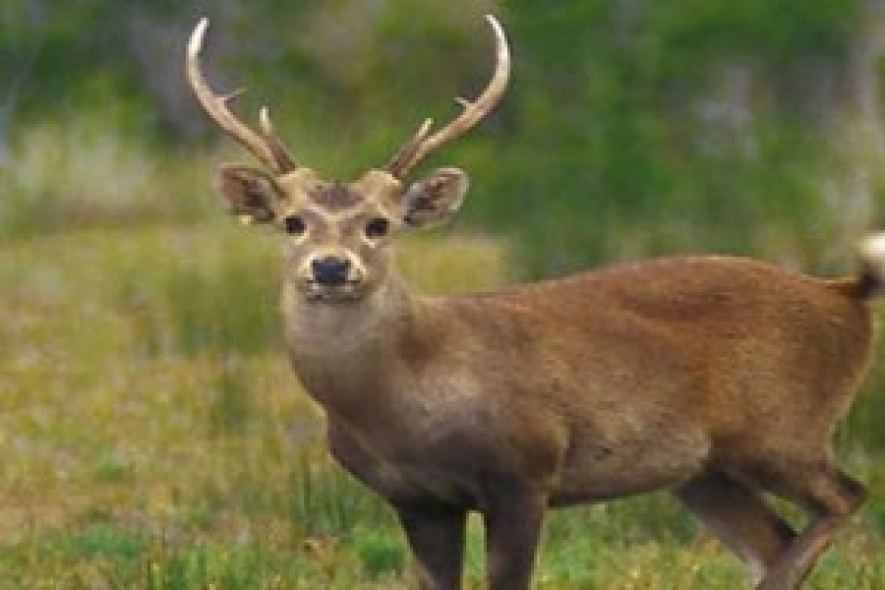This species shows a limited distribution in the island and is recorded from several of the Kaluthara and Galle Districts towards the interior of the country as well as lowland areas in the coastal zone. Small populations have been reported from Mathugama, Bulathsinhala, Ambalangoda, Gonapinuwala, Athkandura, Karandeniya, Thelwatte, Batapola, Uragasmanhandiya and also the islets associated with Madu Ganga. It inhabits areas near swamps, scrub jungles, and cinnamon plantations. Unfortunately, most of the areas inhabited by the hog deer are being cleared lately thus resulting in serious population declines.
Hog deer has been reputed as a pest that feeds on the crops among the residents of the areas it is recorded from. They enter the croplands at night to feed on the cinnamon sprouts and the paddy at the milk stage. Electrocution and ensnaring are used to kill these animals in order to protect the crops. Frequently, animals killed in this manner are butchered and traded, especially in the areas like Ambalangoda, Karandeniya, Batapola and Uragasmanhandiya despite of the rarity of the mammal.
The species shows a limited distribution in Sri Lanka and is recorded from several Asian countries: Nepal, Bhutan, Bangladesh, Miyanmar, Thailand, Vietnam, Pakistan and India. They are comparatively plentiful in Mangrove forests of Miyanmar and India. Hog deer are recorded from Bengal, North India, Panjab and Assam.
Since they show a restricted distribution in the island, it is said to be an introduced species during the colonial era as a game species. Although no written or other evidence has been found to support this idea, evidence has been found to support the fact that the species has inhabited the island in the ancient times. Fragments of a lower jaw tooth of hog deer has been discovered during excavation of the Pothgul Lena in Alavala which was built around 14,000 years ago. This has been proven by Mr.Kelum Manamendraarachchi, who is jointly engaged in research on recovered biological specimens with Dr. Gamini Adhikari.
Hence, its occurrence in the island from antiquity and it can be inferred that the species showed a wider distribution then than now. Moreover, most of the scientists take the view that the species recorded from Sri Lanka can be widely distinguished from the Indian counterpart and are of the opinion that it is likely to be identified as an endemic species with further research.
Hog deer is uniformly light brown in colour and stands up to 60-65 cm. In size, it is smaller than the Spotted deer and is larger than the Barking deer. It can be easily distinguished from the Spotted deer due to absence of white spots and the body colour which is reddish-brown distinguishes it from the Barking deer. Males bear three tined antlers. The species have a comparatively longer tail and shorter legs, and the eyes are more protruding and black in colour.
A comprehensive plan should be prepared in order to conserve the species prioritizing habitat conservation. Further, killing of the species for various purposes should be prevented by enforcing the laws efficiently.
Hog deer is a protected species according to the Fauna and Flora Protection Ordinance bearing No. 22 of 2009. As per the section 22 of the Ordinance, injuring animals of this species, killing, capturing, setting a trap, Gun using any other device of a killed or captured animal or any part (including meat) of it, selling of meat or displaying for sale or antlers are offenses that can be punished for. A person convicted of one of these offenses is liable to a fine not less than Rs. 20,000 and not more than 50,000 or a prison term not less than 2years and not exceeding 5 years, or both the fine and imprisonment.
It is opportune to concentrate on conservation measures, raise public awareness regarding the importance of conserving this species and enforce the laws in its favour in order to protect it from extinction.(Environment Conservation Trust/KH)



















